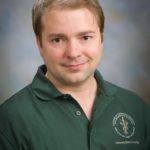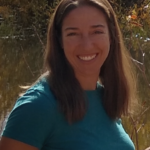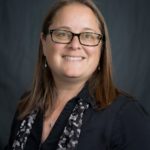2024 Summer Research for Undergraduates (REU) in Aerobiome Research
Have you ever considered the air to be a place that is full of living microscopic organisms that is constantly changing?
Our team of researchers has, and we are working together to investigate a wide range of important and unanswered questions:
- What microbes are in the air?
- Where do they come from, and where do they go?
- What do they do while they are in the air?
If these sound like interesting questions to you, then consider joining our team of diverse scientists for a unique and exciting summer research program.
The BROADN REU program at Colorado State University is sponsored by the National Science Foundation (NSF) and offers undergraduates a mentored research experience to work with a diverse team of scientists to investigate how the microbiome of the air is altered by environmental stresses, and how it impacts human, animal, and environmental health. Our goal is to train undergraduate researchers in the interdisciplinary laboratories conducting research aligned with BROADN’s research goals.
We also strive to honor CSU’s commitment to diversity, equity, and inclusion.
BROADN will host a summer REU program at Colorado State University's Fort Collins Campus from May 28 - August 2, 2024.
Application Deadline: Wednesday, February 28, 2024 by 11:59 PM
Eligibility criteria:
- Students who will graduate at the end of spring semester 2024 are not eligible for this program.
- Participants must be either U.S. citizens or permanent residents of the U.S. or its possessions (NSF requirement).
During the application process, you will be asked to submit unofficial course transcripts and provide email contact information for one person who can write a letter of recommendation for you. Letters of recommendation must be submitted by the application deadline. For assistance or questions regarding letters of recommendation, please see here.
Participants will:
- Conduct original scientific research on a project in a BROADN advisor’s research group.
- Participate in a cohort of undergraduate students working on interrelated projects in parallel.
- Develop professional skills for communicating science (elevator speeches, formal presentations, science communication in popular media).
- Discuss resources for professional pathways in STEM careers.
Participants will receive:
- A stipend of $600/week for 10 weeks ($6,000 total). These funds are considered a scholarship/fellowship and may be taxable. NOTE: If you receive financial aid, please check with your Office of Financial Aid prior to accepting the stipend, regarding any potential impacts to your financial aid package.
- Room and board (includes on-campus housing and a meal plan).
- Roundtrip travel coverage to and from the CSU Fort Collins campus.
For more information or questions about the application process, please contact: [email protected], BROADN REU program director.








